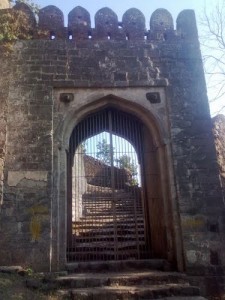The Headquarter city of the district, Chhindwara is situated on the Bodri Stream, a tributary of the Kulbehra River. It is about 337 K.M from Bhopal via Amla and Itarsi and about 315 km via Hoshangabad. By rail the distance of the town is about 128 km from Nagpur. Chhindwara is connected with Nagpur, Seoni, Matkuli, Multai & Narsinghpur by good roads, all radiating from this place. It stands picturesquely on the open Satpura plateau at an elevation of about 677 meters, flanked by ranges of low hills. With a comparatively light rainfall, the climate is very salubrious and pleasant. The name of the place is derived from the Chhind or date-palm tree.
 It is said that one Ratan Raghuwanshi who came from Ayodhya and killed the Gaoli chief of this region founded Chhindwara. Then he let loose a goat and on the place where it lay down built a house, burying the goat alive under its foundations. A platform was erected afterwards on the spot. It is worshipped as the tutelary deity of the town. There is a ruined mud fort at Chhindwara, within which there is an old stone house, supposed to have been that of Ratan Raghuwanshi. A military force was stationed at Chhindwara before the Great Revolt of 1857-58. For a short period the house was used as a sanitarium for the Kamptee garrison.
It is said that one Ratan Raghuwanshi who came from Ayodhya and killed the Gaoli chief of this region founded Chhindwara. Then he let loose a goat and on the place where it lay down built a house, burying the goat alive under its foundations. A platform was erected afterwards on the spot. It is worshipped as the tutelary deity of the town. There is a ruined mud fort at Chhindwara, within which there is an old stone house, supposed to have been that of Ratan Raghuwanshi. A military force was stationed at Chhindwara before the Great Revolt of 1857-58. For a short period the house was used as a sanitarium for the Kamptee garrison.
The Nagpur road that separates the Civil Lines from the rest of the town traverses Chhindwara. Another main road, running from the district office to the railway station, similarly traverses the town. A circular road runs round it passing by the hill of Dharamtekri. With several beautiful roads in the civil line area, the Chhindwara-Nagpur road is picturesque. One road radiates from it and reaches the Collectors bungalow. It is extremely beautiful, shaded by huge old banyan trees on both sides; this region is known as Badwan today. Near about is another road, lined by old and bulky tamarind trees on two sides. Yet another road is bordered by Shisham trees (Dalbergia Sisso). In part the area is well wooded. There are two tanks in the town. Known as the Lalbagh tank (known today as Bada Talab) and Ashburner tank (known today as Chota Talab). The latter is named after Captain Ashburner the Deputy commissioner, under whose supervision the stone embankments and flights of steps were constructed in 1867. A few sculptures on its bank were procured from village Neelkanthi.
To the east of the tank, there are several Hindu temples and a small well, which gives unfailing supply of water, when others dry up. To the east of the railway station there is a well and an underground temple of Mahadev (Presently known as Pataleshwar temple) on the bank of the stream chauhari. A small religious gathering is held near the shrine on the day after the Pola festival.
The Gole Ganj market of the city, with its two large gateways (known today as Kamania Gate), was built by Captain Montgomery, who administrated the district as a regent of Richard Jenkins (1818-1830).
The city has some old industries of pottery, leather moots and ornaments of zink, brass and bell metal. On the outskirt, vegetables, especially potatoes are raised in large quantities and exported to nearby districts. The town, which is a center for local trade and market for the sale of cattle grain and timber, contains a grain market near the railway station. A town hall is located in the civil area.
The municipality of Chhindwara was founded in 1867. Its municipal area is divided into 5 wards. The non-municipal area comprises nazul land. There are several schools (including government and missionary), college, public library and reading room, post and telegraph offices with public call facility, dispensary, hospital, cinema house and printing presses in the town. It is the center if a Community Development Block.
Chhindwara Map
View Larger Map




I am very grate full that am live in chhindwara